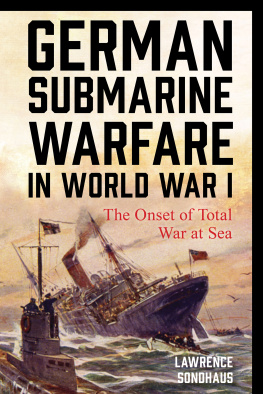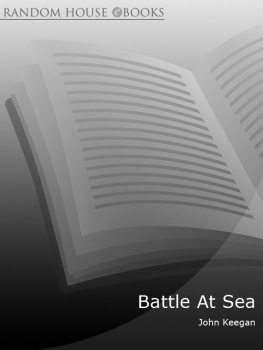Thunder Below!
The USS Barb Revolutionizes Submarine Warfare in World War II
Eugene B. Fluckey
Rear Admiral, USN (Ret.)
University of Illinois Press
Urbana and Chicago
Frontispiece (hardcover edition only): The BARB Strikes, courtesy of General Dynamics Electric Boat Division
1992 by the Board of Trustees of the University of Illinois
Manufactured in the United States of America
10 11 12 13 C P 9 8

This book is printed on acid-free paper.
Library of Congress Cataloging-in-Publication Data
Fluckey, Eugene B., 1913
Thunder below! : the USS Barb revolutionizes submarine warfare in World War II / Eugene B. Fluckey.
p. cm.
Includes index.
ISBN 0-252-01925-3 (cloth : alk paper)ISBN 0-252-06670-7 (pbk.)
ISBN 978-0-252-01925-8 (cloth : alk paper)ISBN 978-0-252-06670-2 (pbk.)
1. World War, 19391945Naval operationsSubmarine. 2. Barb (Ship). 3. World war, 19391945Naval operations, American. 4. World War, 19391945Personal narratives, American. 5. Fluckey, Eugene B., 1913I. Title.
D783.5.B36F58 1992
940.54'5974dc20 91-45582
CIP
To Margaret, my beloved Scot, who inspired me to write this story of the submarine Barb and who assisted me in my research in Tokyo, China, Taiwan, and beyond. Critiquing every word, her suggestions have been invaluable.
To Marjorie, my beloved, diabetic wife, who, half a world away during World War II, absorbed my entire bucket of fear, so that I could grapple intelligently with a concrete enemy to shorten the war. God rest her brave soul.
To Barbara, my beloved daughter, who as a six-year-old stood my watch for me and twice saved her mother from comas.
To each of my shipmates in the Barb for the extraordinary heroism above and beyond the call of duty that you displayed.
To the wives, families, and sweethearts who boosted our morale by using that long arm of love, correspondence.
Illustrations
Tenth war patrol track chart
Eleventh war patrol track chart
Twelfth war patrol track chart
Preface
This is the history of the U.S. submarine Barb while she was under my command during World War II. It is written in the sense of the lively nonfiction that it was.
Reconstructed conversations abound to breathe life into the story. These have a factual basis from the written log, reports, messages, letters, notes, oral histories made during and after World War II, stories that the Navy Department's public relations office asked me to write for their publications, reunions, interviews, and an illegal diary kept by a shipmate. One crew member who reviewed the manuscript remarked, You must have had a tape recorder.
Regarding the events depicted on other submarines, their stories are taken from reportsboth Japanese and their ownpersonal conversations with the captains involved, and consummate knowledge of how they operated.
There are two divisions for the Japanese commands. The naval warships made voluminous after action reports that depicted the gallant and courageous fights to save their ships. The actual names of the captains and the convoy commanders are used where made available. The individual merchant ships actions were derived from my personal observation during the battles, interrogation of Japanese prisoners we picked up, and reports made to the shipping companies that were obtained by the Japanese Department of War History.
Our outstanding wolfpack commander, Admiral Elliott Loughlin, verified the Barb's actions on three patrols.
Conversations between Fleet Admiral Chester Nimitz and Admiral Charles Lockwood, the Submarine Force Commander, were related to me while I was Nimitz's personal aide when he was Chief of Naval Operations after the war.
All messages, letters, and the diary are verbatim.
My extensive research occupied over ten years. Japanese officer friends assisted me while I was in Tokyo, and afterward through correspondence. This enabled me to unfold the factual Japanese side of events, where known. In June 1991 I conducted my research in China.
My objective in Thunder Below! has been to provide the reader with the best and most complete account of every attack, whether against land or sea targets, as reported by those concerned. There are still mysteries to unraveldue to the disappearance of certain recordsbut I have not fabricated this history. I was there.
When I joined the Barb in January 1944, war with Japan was in the limited offensive stage, Japan having reached the maximum limits of its empire. U.S. submarine warfare was to be intensified to strangle Japan. The Central Pacific drive was ready to begin, as was the movement of the Southwest Pacific forces into New Guinea. The South Pacific forces had taken Guadalcanal; the North Pacific forces were to take the Aleutians. Now we would begin the tightening of the steel belt around Japan. The Chinese Army could not be deployed for it was engaged in a major Japanese offensive in China. The overall Japanese and Allied forces were relatively equal. Unscathed, U.S. production was steamrollering along at flank speed.
Acknowledgments
I am deeply indebted to the following people and organizations who assisted me in World War II and in over ten years of research for this book:
Publishers Robert Hale Ltd. of London for permission to quote from Bamboo and Bushido by Alfred Allbury, a British soldier and prisoner of war.
General Dynamics Electric Boat Division, Groton, Connecticut, for their excellent construction of the submarine Barb in 1942. Their outstanding workmanship enabled her to withstand the pounding punishment meted out by enemy warships and aircraft. Though her test depth was designed for only 312 feet, I took her much deeper, with confidence, to evade the enemy. I also greatly appreciate their courtesy in permitting me to use their famous lithograph The BARB Strikes as the frontispiece to this book.
Leading Torpedoman Charles Tomczyk of New Jersey for permitting me to use sections of his illegal diary. They portray a variation on events I too had witnessed.
Neville Thams and Jack Flynn, Australian Army prisoners of war and close friends, for permitting me to quote from their speeches.
Barb officer Everett P. Tuck Weaver and Rita Weaver for the innumerable hours they spent researching, investigating, writing letters, obtaining translations and stories, editing, and tracking down evidence through the maze of debatable history. Barb officers Max Duncan, Dick Gibson, and Bob McNitt (the executive officer during war patrols 8 and 9) for their research and assistance in reproducing conversations accurately. Paul Saunders, chief of the boat, for his help in verifying actions and conversations that took place in the Barb. Jack Dittmeyer for his assemblage of shipmates addresses, and my other shipmates for photos and anecdotes. Professors Henry Sage, Karel Montor, and Frank Gambacorta, Admiral Robert Long, and Linda O'Doughda for their astute editing. Top World War II combat artist Al Murray for the use of one of his many portraits. The Naval Imaging Command's John Lewin for resurrecting the Barb













 This book is printed on acid-free paper.
This book is printed on acid-free paper.